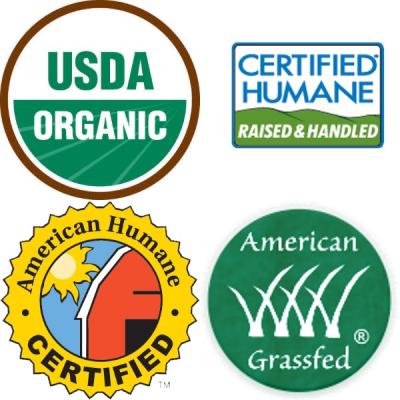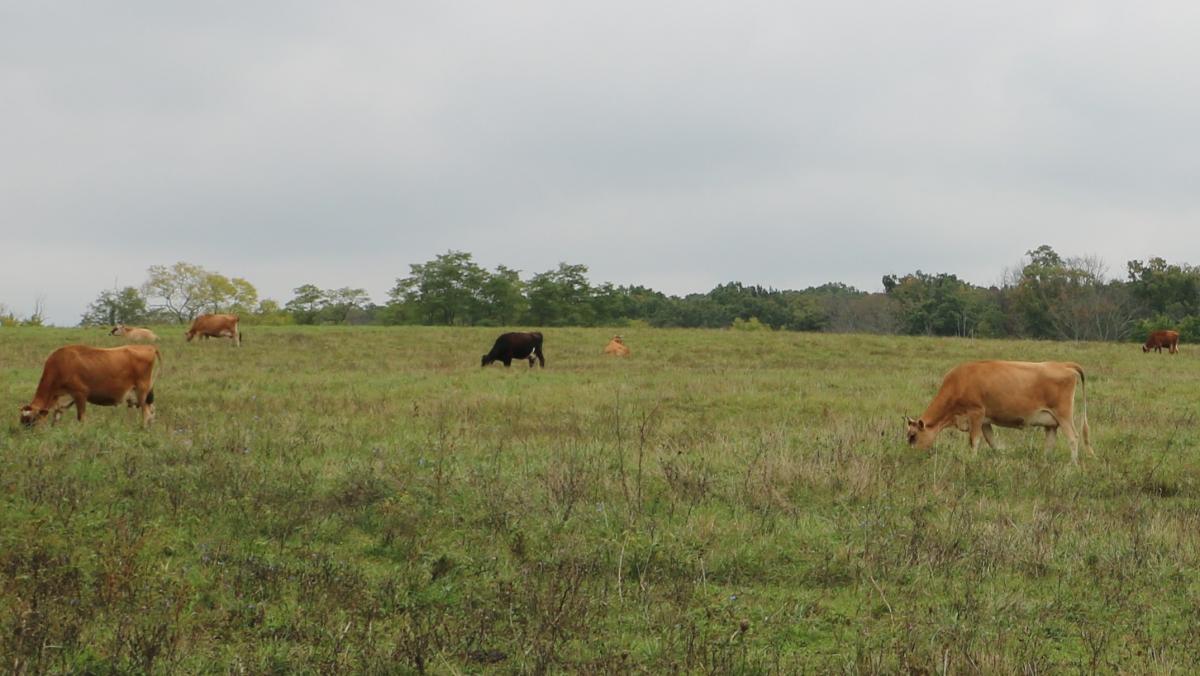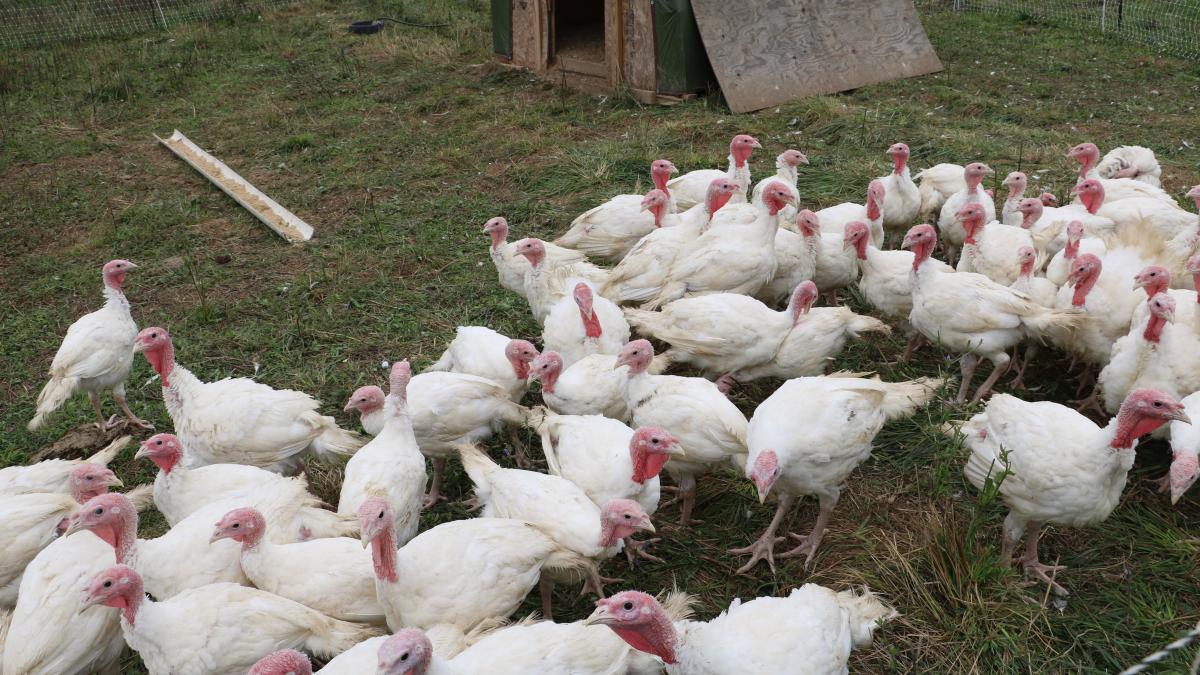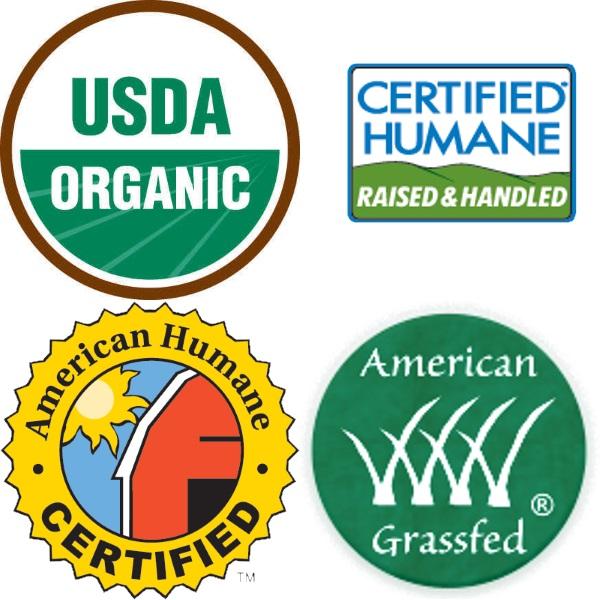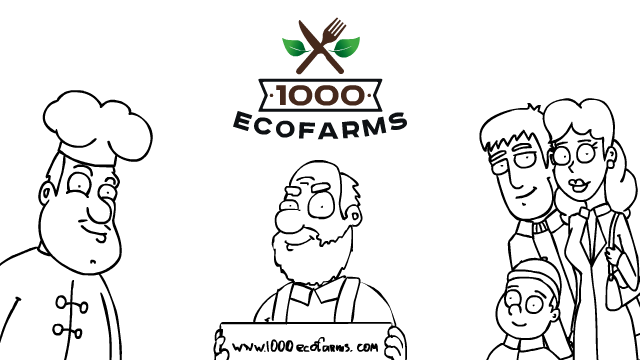Some labels on meat and other products are actually defined and regulated by the US Department of Agriculture, and have a fairly precise meaning, while others are widely used, but carry no specific definitions. Here are some of the more common labels used on beef, pork and poultry and their meaning (or lack thereof).
- “Certified” - The term implies that the USDA’s Food Safety and Inspection Service and the Agricultural Marketing Service have officially evaluated the meat for class, grade or other quality characteristics.
- “Free Range/Roaming” - Producers must demonstrate to the agency that poultry has been allowed access to the outside during their production cycle. The outdoor area may or may not be fenced and/or covered with netting like material.
- “Natural” - “Natural” products contain no artificial ingredients or added colors and are only minimally processed in such a manner that it does not fundamentally alter the product. The label is to include a statement explaining the meaning of the term natural. The label does not indicate anything about standards regarding farm practices and it only applies to the processing of meat and eggs.
- “Naturally Raised” - The animal has never been fed animal by-products, growth hormones or antibiotics. The animal could have been fed either grain or grass. The label does not indicate anything about confinement.
- “No Hormones” (for pork or poultry) - Hormones are not allowed when raising hogs or poultry meaning that this label should not be used on these products unless it is followed by a statement of “Federal regulations prohibit the use of hormones.”
- “No Hormones Administered” - This term may be used on beef if there is enough documentation submitted to the Agency to show that no hormones have been used when raising the animals.
- “No Antibiotics Added” (red meat and poultry) - This term may be used on red meat and poultry if there is enough documentation submitted to the Agency to show that no antibiotics have been used when raising the animals. The label may also show up as “Raised Without Antibiotics,” No Antibiotics Ever” or “No Antibiotics Administered.”
- “Grass-fed” - The animals receive a majority of their nutrients from grass throughout their lives. This label does not limit the use of antibiotics, hormones or pesticides, however.
- “USDA Organic” - 95% of the product has been produced using methods that integrate cultural, biological and mechanical practices that foster cycling of resources, promote ecological balance and conserve biodiversity. Synthetic fertilizers, sewage, sludge, and genetic engineering may not be used.
- “Pasture Raised” - The USDA has not created a labeling policy for this term.
- “Humane” - Multiple labelling programs make claims that the animals were treated humanely during the production cycle; however, the verification of such claims varies. These programs are not regulated.
- “Grass Finished” - This term has no legal meaning and is mostly a marketing ploy. This term is relatively rare.
While some of these labels might imply more humane conditions, they might be deceiving. For example, for “Free Range,” the animals only have to be granted access to the outdoors, but the size and quality of the outdoors and the time of access is not regulated. The outdoors that they have access to may simply mean a patch of dirt or gravel or a slab of concrete. Furthermore, in some large-scale factory farms where inhumane treatment runs rampant, the birds flock together naturally and may be afraid to leave the flock and go outdoors. They have access, but it might not be utilized.
The label “Grass-fed” is also misleading and says nothing about the treatment of the animals. While the term implies continuous access to pastures during the growing season, it does not preclude animal confinement and as such the animals may be confined to a pen and fed grass rather than grazing on pastures of grass.
Some of these terms are seemingly used as a marketing tactic and are somewhat misleading. Take for instance the label “natural.” All fresh meat is technically natural in that it is often minimally processed and contains no preservatives or artificial ingredients. But the label means nothing when it comes to where the animals were raised, what they were fed, or how they were treated. Therefore, this term does not hold much weight for animal products.
The label “Grass-fed” is also misleading and says nothing about the treatment of the animals. While the term implies continuous access to pastures during the growing season, it does not preclude animal confinement and as such the animals may be confined to a pen and fed grass rather than grazing on pastures of grass.
Some of these terms are seemingly used as a marketing tactic and are somewhat misleading. Take for instance the label “natural.” All fresh meat is technically natural in that it is often minimally processed and contains no preservatives or artificial ingredients. But the label means nothing when it comes to where the animals were raised, what they were fed, or how they were treated. Therefore, this term does not hold much weight for animal products.
There are also labels created by third party organizations that have their own certification standards and requirements. Since they are not government issued or regulated, they are voluntary so the producing companies may utilize these for marketing purposes. Here are a few examples:
- “American Humane Certified” - The standards are lengthy and species specific. They are built on the Five Freedoms of Animal Welfare set of principles that requires that an animal be healthy, comfortable, well-nourished, safe, able to express natural behavior and free from unpleasant states like pain, fear and distress.
- “American Grassfed Certified” - This label is administered by the American Grassfed Association and it stipulates that animals must have access to pasture and fed a diet of 100% forage (meaning no feedlots). In contrast to simply “Grass-fed,” this label prohibits confinement, the use of hormones and the use of antibiotics. The label does not stipulate any requirements of humane treatment, however.
- “Certified Humane” - This label grants minimum space allowances and indoor enrichment for the animals, but outdoor access is not required for meat birds, egg-laying hens and pigs. Some inhumane practices like beak trimming and tail docking are allowed under certain circumstances.
- “Food Alliance Certified” - The label supports “safe and fair working conditions, humane treatment of animals, and good environmental stewardship.” The standards require access to natural light, fresh air and space; however, outdoor access is not required for all animals. Pain relief is not required for physical alterations like tail docking. The standard does not include the treatment of animals at slaughter.
While some labels are meaningful and useful, others are misleading and may be used mostly for marketing purposes. To really know what you are eating and to avoid being misled, get to know your farmer and ask about their processes and practices.


